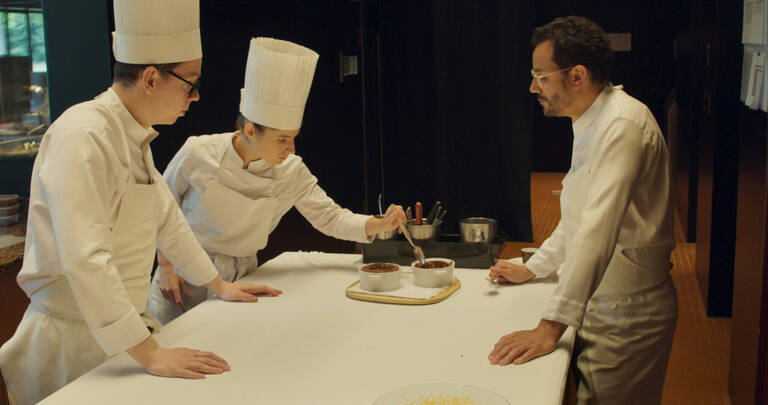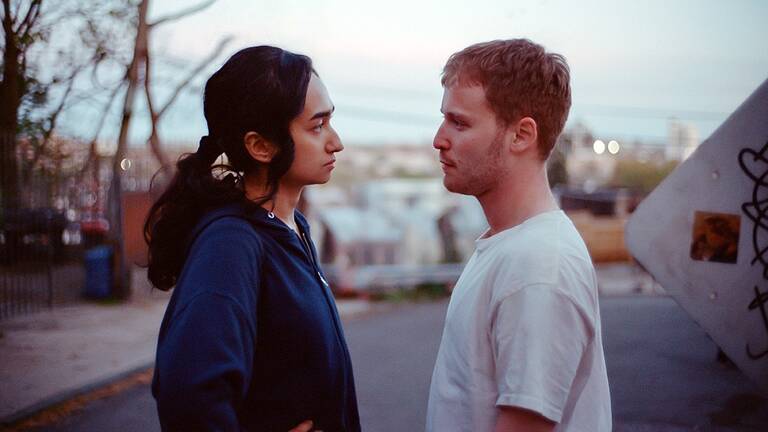
Dir. Isao Takahata, Japan, 2014, 115 mins, in both English language and Japanese versions
Cast (voice): Various
The Tale of the Princess Kaguya was slated for release at the same time as Hiyao Miyazaki’s The Wind Rises, to mark 25 years since the co-release that launched Japan’s most famous anime studio – the same directors’ Grave of the Fireflies and My Neighbour Totoro – but director Isao Takahata is a perfectionist and works slow.
The film retells a classic folk tale, ‘The Tale of the Bamboo Cutter’, from the perspective of a tiny girl whom a poor bamboo cutter finds in a magical bamboo shoot. The bamboo cutter raises the girl with his wife – Kaguya grows very fast – and when he finds a large amount of gold in another magical bamboo shoot, he decides to turn the cartwheeling tomboy into a princess.
Kaguya would rather play with her smudge-faced chums in fields and rivers than don a kimono and have her eyebrows plucked and her teeth dyed black; so when suitors come calling, she sends them on impossible quests, all the time hiding a deeper conflict relating to her otherworldly origins.
The most striking aspect of this gently ravishing film is the animation, which is the polar opposite of the bright, saturated, acrylic coloured approach you associate with Miyazaki films. The look of The Tale of the Princess Kaguya refers back to the scroll art of the 11th century, when the story was first written down: it has an ‘unfinished’ look with washed-thin watercolour brush work on top of minimal but expressive pencil lines; and the action and environments bleed into whiteness.
Takahata’s approach suggests several things – the incompleteness, the temporal, illusory nature of dreams and life? the too-colourful world as seen by a dweller from the colourless moon? – but it also speaks of the way the film was made. Takahata is an animation director rather than an animator: Osamu Tanabe outlined the lead characters in fast pencil line drawings which were then colour washed by other animators, overseen by Kazuo Oga. The effect is to foreground actions that are dynamic, passionate and impressionistic; which themselves obey an entropic law, dissipating into their environment. The visual affect is both striking and unique, delicate and stoical at the same time.
It is an almost eerie approach that is utterly fitting for a ghostly story that has resonances with Kenji Mizoguchi’s Ugetsu Monogatari. And there’s another Mizoguchi resonance: moreso than Miyazaki’s lively heroines, Kaguya is constrained – not just by her role as courtly woman but also because of her special relationship with the moon, her knowledge of her own supernatural mortality.
Against Oga’s diaphanous backgrounds, realistic details – a baby’s movements, a frog hopping – stand out finely, although they too are drawn with minimalist calligraphic sweep. In one key scene, the pencil work is allowed full expressionist rein: Kaguya storms out of her coming-out party, runs off into the night, her escape transformed into a trajectory without a background, reduced to a flurry of angry pencil and brush strokes. Intensely energetic moments like this would suggest that the film was spontaneously, breathlessly made – whereas in fact it had an eight-year production history.
Before Kaguya and her surrogate family move to the city and the court, I personally reached my ‘cute aggression’ point; I found myself considering the childlike ‘Oh The Wonder!’ aspect of the film too gooey-eyed and Joe Hisaishi’s music started to cloy.
But the character of Kaguya, her story and her sadness all beef up in the second half; and the Buddhist entourage that descends from the moon at the end to take their princess home, while playing some very chilled world music beats … well that’s just plain weird, but I liked it!
Studiocanal are releasing both English language and Japanese versions, the dubbed release features Darren Criss, Lucy Liu and Chloë Grace Moretz as Princess Kaguya.
Review by Colin Dibben
Rating: Four stars
Clip:



